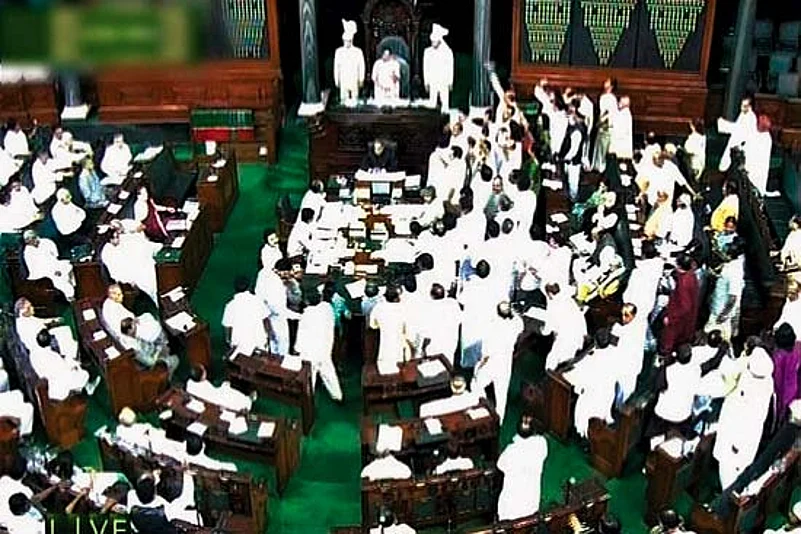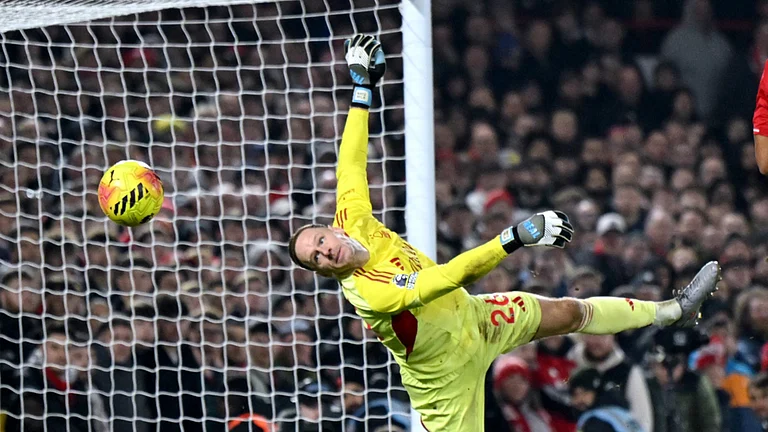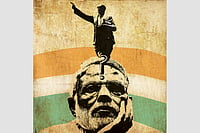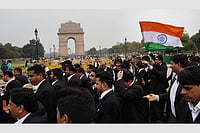If the incidence of disruptions is anything to go by, Parliament, especially the Lok Sabha, has functioned fairly smoothly in the last two sessions. In the winter session, the Lok Sabha functioned for nearly 100 per cent of its scheduled time. Though the Rajya Sabha was subject to disruptions in the winter session, it too had functioned for over 100 per cent of its scheduled time in the short Budget session in July. The numbers, however, hide important deficiencies. Two things stand out in the current context. First, Prime Minister Narendra Modi rarely speaks in Parliament. Second, there has been a flurry of ordinances by the government. Both, in different ways, speak to the reduced place of Parliament in India, though none of these are specific to the current dispensation. They have a somewhat longer history.
Jawaharlal Nehru’s attachment to Parliament and its traditions was, of course, legendary. His political opponents recognised this as well. The Communist MP and eminent parliamentarian, Hiren Mukherjee, wrote of Nehru that he “lent to parliamentary proceedings a certain additional importance, as it were, by being himself the target of debate on all crucial occasions”. But since Nehru, it’s been downhill so far as the PM’s participation in Parliament was concerned, which was also a sign of the creeping erosion of the institution.
The decline began from Indira Gandhi’s time. To quote Mukherjee once again, “There is no question that Indira Gandhi was overwhelmingly preoccupied. But her father had wider-ranging interests and at least an equally arduous workload. Better planning of her time could help, if only she really cared. Quite often it was known that the prime minister was in Parliament House but otherwise engaged when her presence in the chamber was necessary.” Later prime ministers have been no better with Manmohan Singh being at best a reluctant parliamentarian.
Modi has continued this tradition despite his party enjoying a comfortable majority in the Lower House. That the onerous responsibilities of a prime minister are no excuse to skip Parliament was shown by Nehru. What is also missing is an institutional arrangement to make the PM answerable to Parliament. While the Indian PM usually comes to the parliamentary chambers once a week, there is no system like the prime minister’s Question Time in the United Kingdom, where the PM answers questions from MPs in the House of Commons for half hour every week. The MPs usually raise questions of current political significance and can ask up to six questions, none of which the PM knows beforehand. Despite domestic and international commitments, all British PMs in the last three decades have maintained nearly 90 per cent attendance during question time.
The other worry is the eight ordinances already issued by the BJP government in its tenure in power (which works out to roughly one ordinance a month). It even prompted President Pranab Mukherjee, during his Republic Day address, to warn the government against taking the ordinance route. There is ample precedent, however, for ordinances going back to the Nehru years, with a dramatic increase during Indira Gandhi’s time. More recently, the Vajpayee government promulgated into law 33 ordinances between 1999-2004, and the Manmohan Singh government 36 between 2004-2009. Unsurprisingly, the worst offenders with regard to ordinances were H.D. Deve Gowda and I.K. Gujral, both of whom headed unstable coalitions and promulgated 23 ordinances each in the short period that they were in power between 1996-’98. India’s first speaker of the Lok Sabha, G.V. Mavalankar, had warned of the adverse impact of ordinances, writing to Nehru in 1950 that they were “inherently undemocratic” and that it gave Parliament “a sense of being ignored”. He added in 1954 that ordinances should be limited to cases of “extreme urgency or emergency”. Successive governments have ignored Mavalankar’s warning and the Modi government is no exception. It is also instructive that most of the democracies that allow ordinances or decrees follow a presidential system and not parliamentary democracy.
If we move beyond these two issues, productivity and the role of disruptions are central to any discussion of Parliament. The number of sittings of Parliament has declined from an average of 127 days in the 1950s to 71 in the 2000s. This has impacted both its legislative and deliberative functions. Part of the problem is that there is no pre-ordained calendar for Parliament, except for the informally agreed three sessions a year. At the same time, disruptions have steadily eaten into parliamentary business. In the last Lok Sabha, the 15th, as much as 40 per cent of the total time was lost to disruptions. It wasn’t as if disruptions and protests were unheard of earlier. Such disruptions, however, have become increasingly frequent since the 1970s. In 1980, veteran journalist Inder Malhotra wrote in The Times of India: “Bedlam in both Houses has by now become a daily routine, rather than an exception to the rule.” There are several reasons for the rise of disruptions. These include the demise of one-party dominance, rise of coalition politics, live telecast of debates and a change in the composition of Parliament, from one dominated by lawyers to one where many MPs are unschooled in true parliamentary traditions.
It is also true that from fairly early on MPs expressed the need to protest inside the House. In a parliamentary report in 1972 on disruptions, Mukherjee wrote: “Normally no one would like to disturb in any way an occasion like the President’s address to Parliament. If, however, circumstances happen to be somewhat abnormal in the country, it might conceivably be the duty of Opposition parties in Parliament to focus attention on the people’s discontent even on such an exceptional occasion.” Most MPs are likely to agree with this defence of disruptions. In 2012, then leader of the opposition in the Rajya Sabha, the BJP’s Arun Jaitley, wrote in an article that though “parliamentary obstructionism” should be avoided, it is a “weapon to be used in the rarest of the rare cases”. Some have pointed out that one way to avoid disruptions would be to follow the practice of the House of Commons where for 20 days per year the agenda for discussion can be decided by the opposition. Of these, 17 days are reserved for the main opposition party and three for the next largest party.
Something needs to be said too about the quality of debates in Parliament. There is always the danger of falling into the trap of a golden age, which as Harold Laski said “insists that the great age of parliament is one we just fail to remember”. But it is also true that the later parliaments cannot compare to the provisional parliament, right after independence, and the first one, both of which had a stellar cast of MPs. Talking about parliamentary institutions, a British newspaper in 1954 had remarked that “Delhi was the school of Asia”. There are of course several good speakers in the current parliament, but real debate is constrained by the anti-defection law which forces an MP to vote according to the party whip.
There are some bright spots however. Behind the scenes, the committee system, which was expanded in 1993 with the setting up of departmentally related standing committees, has functioned reasonably well and usually through consensus. Though committee recommendations are not binding on the government, many of them are taken on board. If they are not, the government has to justify its position. But the performance of different committees is uneven and often dependent on its chairperson. Indian Parliament reflects the changing nature of politics and society. The political theatre that characterises much of India’s wider politics has permeated Parliament too. Hence disruptions are now as much part of Parliament as the elaborate rituals borrowed from the British. Again, for all the stick that they get, India’s MPs are far too caught up with the demands of their constituency, many of which are much larger and densely populated than any other democracy. In the tug of war between ensuring popularity and winnability in the constituency and being a lawmaker, too often it is the former that wins.
(The writer is senior research fellow, ISAS&ARI, National University of Singapore.)























